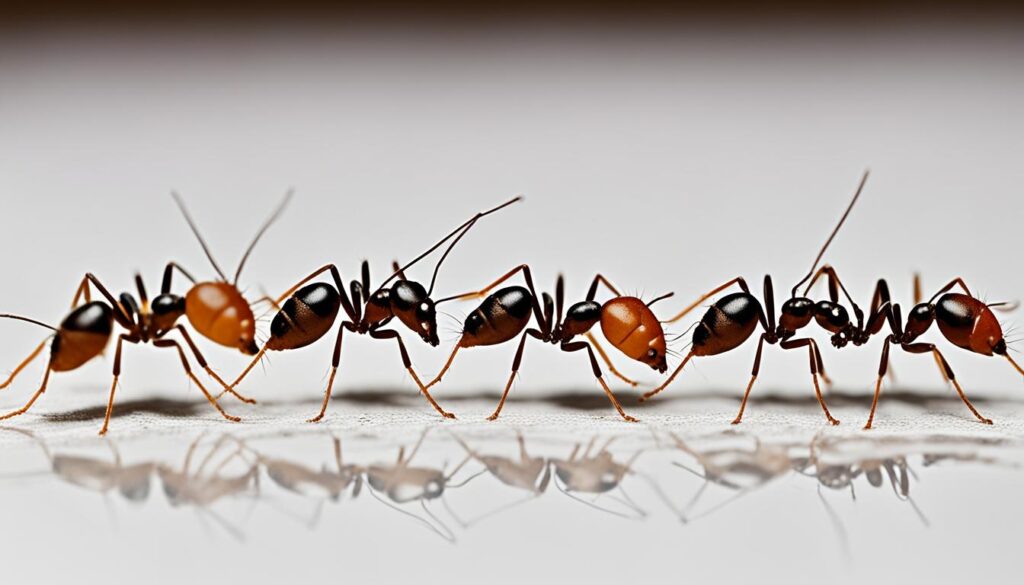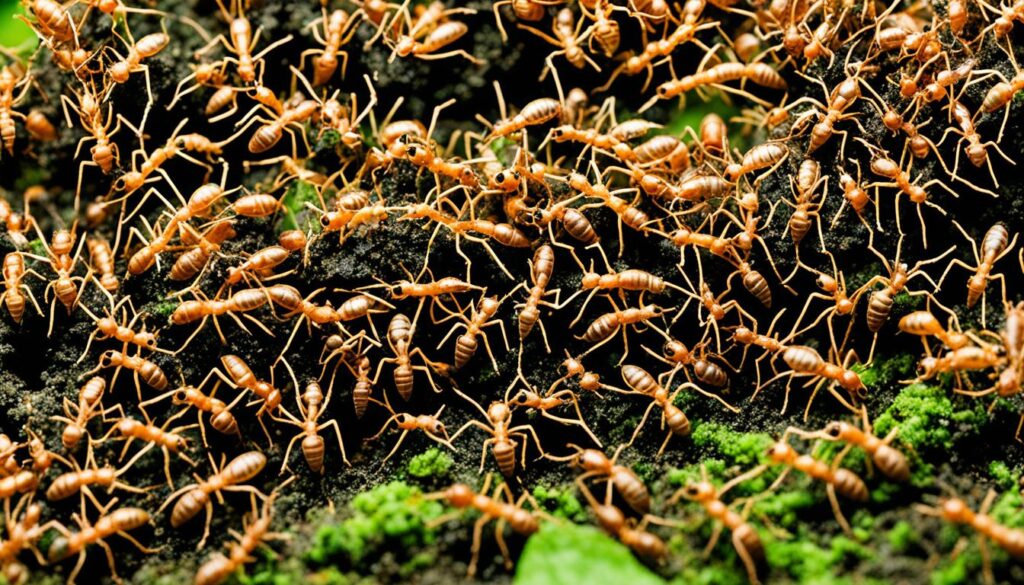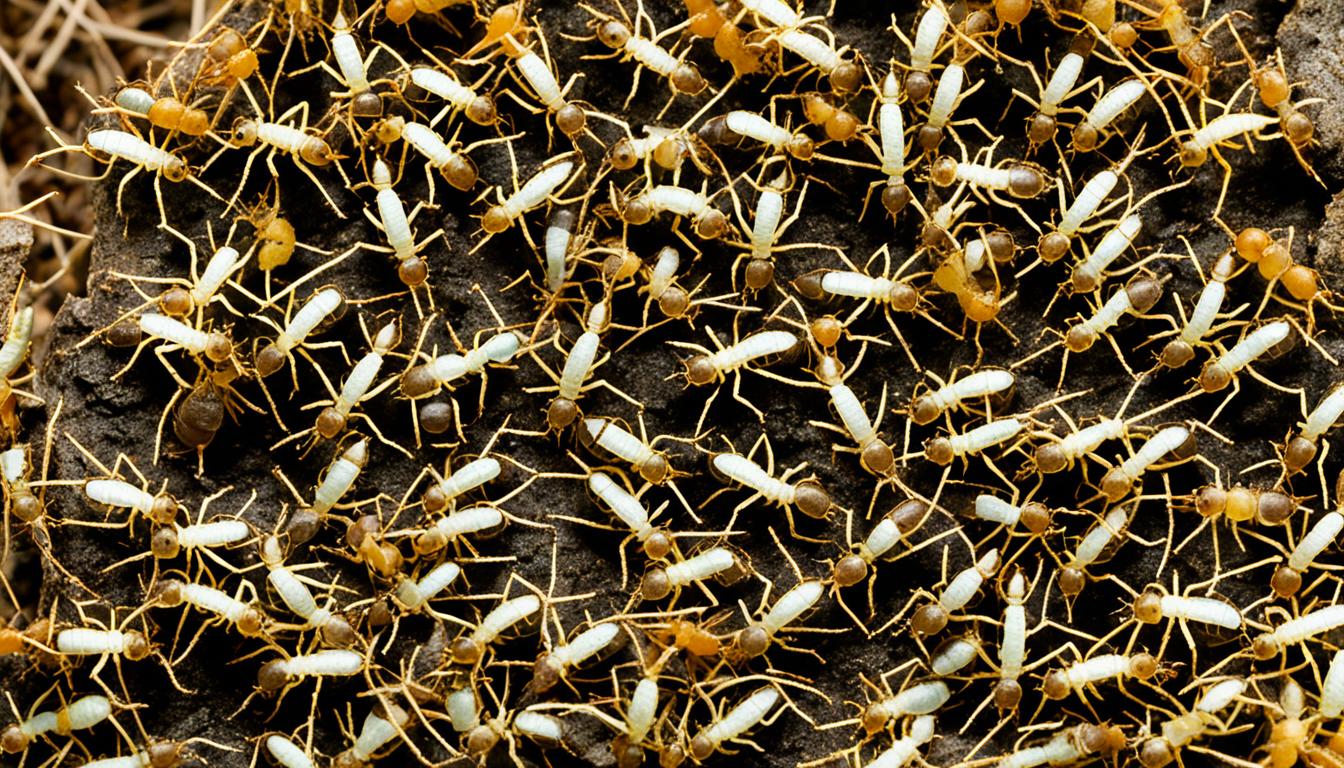Meet the Argentine ant, known by the name Linepithema humile. It’s a global traveler, invading homes and messing up nature around the world. This tough little ant hails from South America. But now it’s in over 15 countries, including the United States since 1907.
These ants make huge colonies and push out the local ant gangs. So, they are a big problem in cities, nature spots, and farms.
Argentine ants don’t hit or bite us, but they are still trouble. They come into our houses looking for food and water. Plus, they help harmful bugs like aphids by keeping them safe.
It’s very important to know about these pesky ants. This helps to control them and protect the places where they don’t belong.
Argentine ant species names
I’ll provide a list of Argentine ant species names. However, it’s important to note that there’s only one species commonly referred to as the “Argentine ant.” Here’s the information:
- Linepithema humile
This is the scientific name for the Argentine ant. It’s the only species typically called the “Argentine ant.”
While there are no other species called “Argentine ants,” there are other species in the genus Linepithema. Some of these include:
- Linepithema anathema
- Linepithema gallardoi
- Linepithema iniquum
- Linepithema keiteli
- Linepithema micans
- Linepithema oblongum
- Linepithema piliferum
- Linepithema tsachila
These species are not specifically called “Argentine ants,” but they are closely related to Linepithema humile.
Linepithema humile: The Infamous Argentine Ant
The Argentine ant is a small, brown ant. It is about 2.2 to 2.6 mm long. You can spot them by looking at their shapes. They have a point where their thorax and abdomen meet.
They are different from many other ants because they don’t have spines on their thorax. Also, their gaster is straight up and down. This part is like their back end. Argentine ants have big compound eyes. They have about 100 parts in their eye that help them see.
On their head, near their mouths, they have tiny hairs. These are called setae. The queens are bigger than other ants. Before they mate, they have wings. But, they lose their wings after they find a home.
Description and Identification
The Linepithema humile ant comes from some parts of South America. This includes Argentina, Paraguay, Uruguay, and Brazil. But now, it lives in many places around the world.
People have helped them spread. They go from place to place by hiding in things we move. Now, they are in many countries. This includes places like Europe, South Africa, Australia, and the United States.
Distribution and Spread
This ant is not good for the places it goes. It makes big groups and takes food from other animals. It is listed as one of the top 100 worst invaders. This is according to a group that studies these animals closely.
| Characteristic | Description |
|---|---|
| Length | 2.2 to 2.6 mm |
| Color | Small, slender, brown |
| Petiole | Pointed |
| Thorax | Lacks spines |
| Gaster | Vertically aligned |
| Eyes | Proportionally larger, with ~100 ommatidia |
| Clypeus | 1-3 pairs of setae between mandibles |
| Queens | Larger than workers, lose wings after mating |

Their Impact and Importance
Meet the Argentine ant, also known as Linepithema humile. It brings trouble to cities and big problems in farming. This ant has spread worldwide, damaging crops, plants, and nature.
Economic and Agricultural Impacts
Honeydew-producing bugs, like aphids and mealybugs, are friends with Argentine ants. The ants protect these bugs, helping them harm plants more. Farmers and gardeners then spend more on fighting these pests.
These ants often push out local ant species, messing up the ecosystem. For example, in Southern California, they hurt horned lizards. These lizards eat ants but can’t find enough with the Argentine ants around. Also, flower-loving bugs get hit hard by the ants, hurting the plants they pollinate.
Fighting these ants is hard since they don’t have many enemies. Scientists are working hard to understand them better. They hope to find ways to control the ant problem.

Even with the tough fight, everyone must know about the Argentine ant’s harm. By learning and using the right methods, we can protect our plants and animals from this pest.
Conclusion
The Argentine ant is a big problem around the world. They have spread a lot, mostly because of us. These small, brown ants make big groups. This helps them take over where they live, pushing out other ants.
They annoy us in cities and hurt farming. They work with other bugs that eat plants. So, they can cause big problems for everyone. It’s not about us; it’s about our spaces and crops.
Dealing with these ants needs both chemicals and new ways of thinking. It’s key to find them early and stop them from taking over more places. They are one of the worst invaders, and we must keep fighting them.
We need to look after our natural places. It’s important to know a lot about the Argentine ant. Finding new ways to stop them from spreading is our best weapon. Let’s be smart and keep our world safe from these ants.

